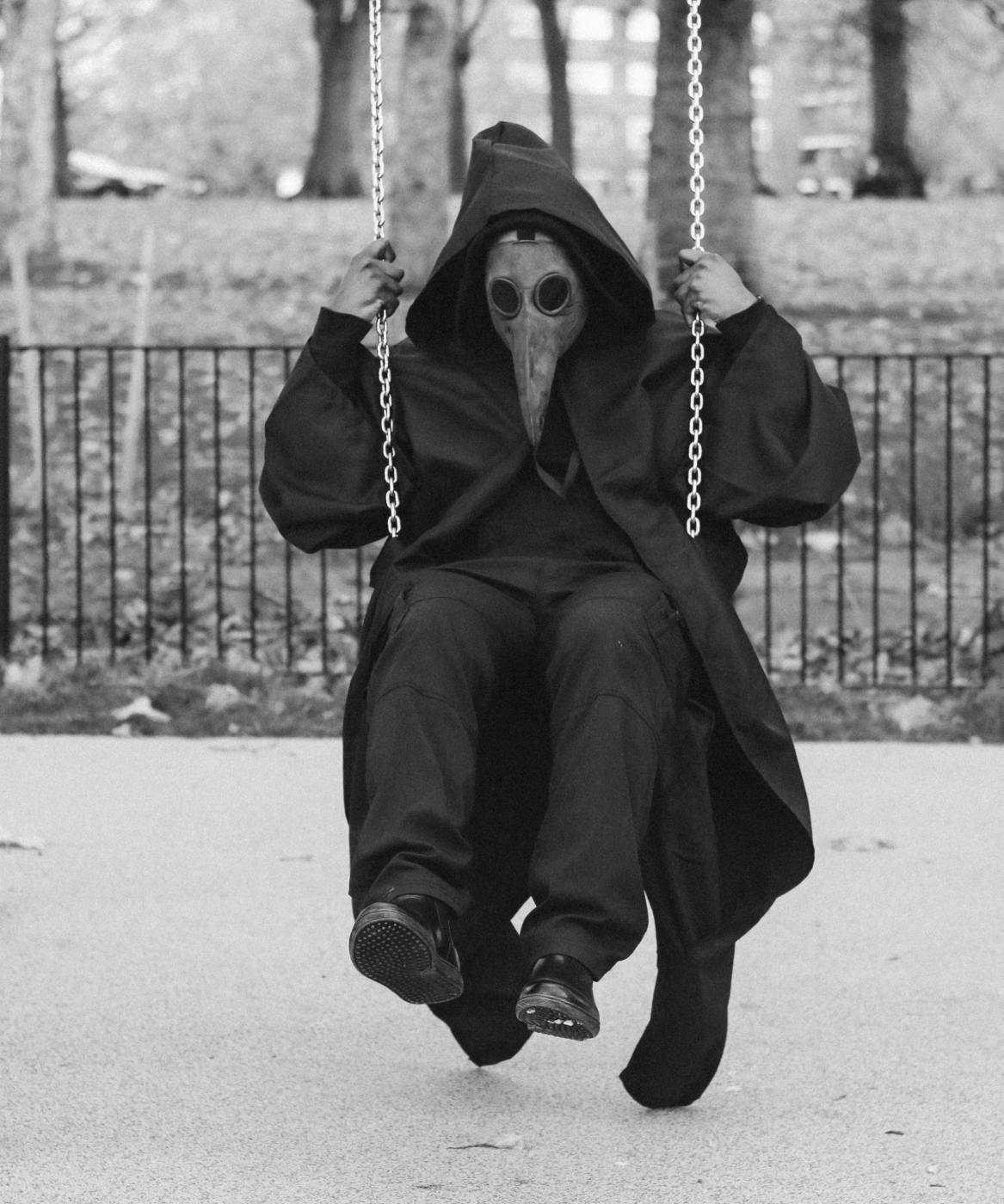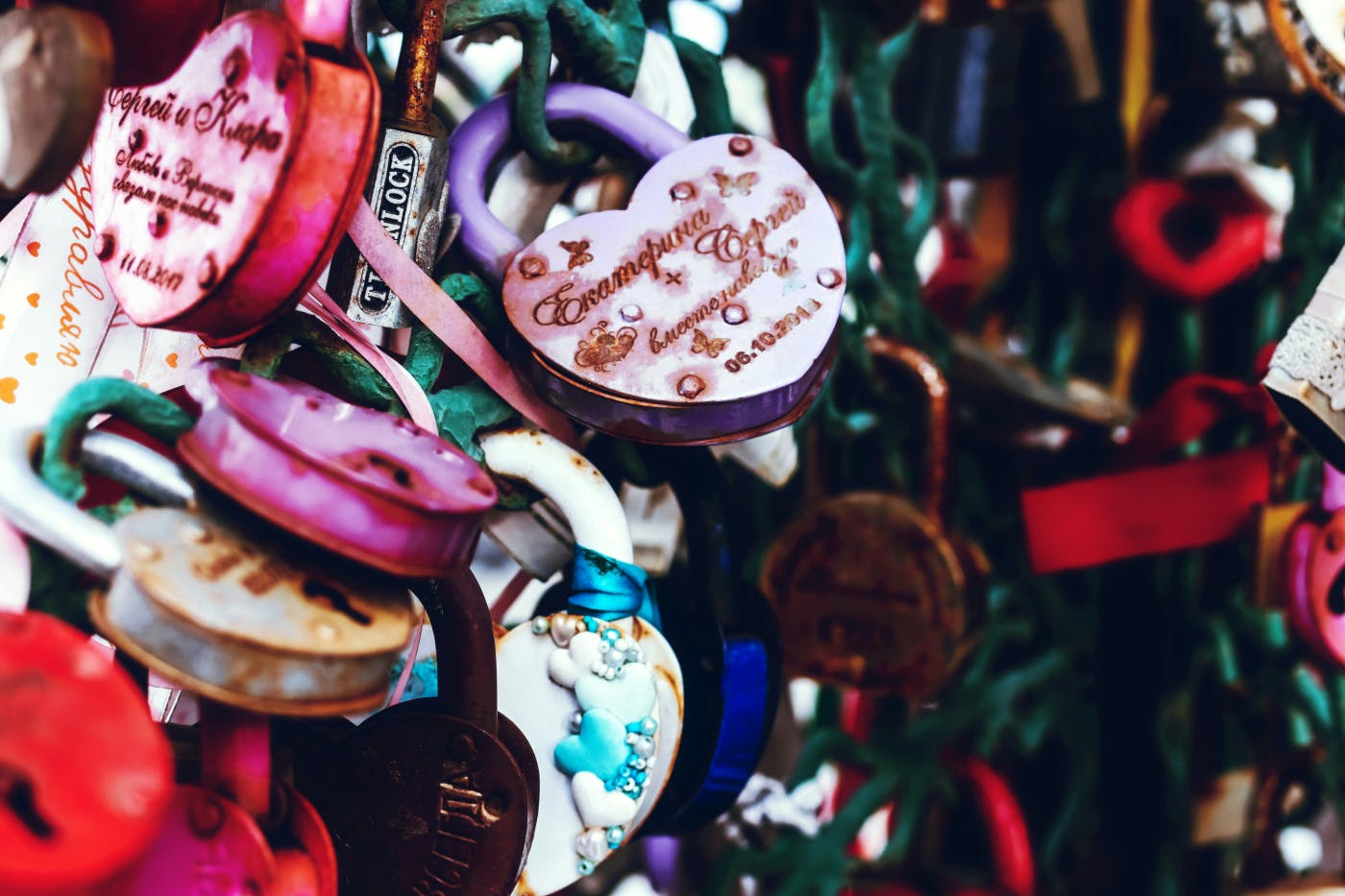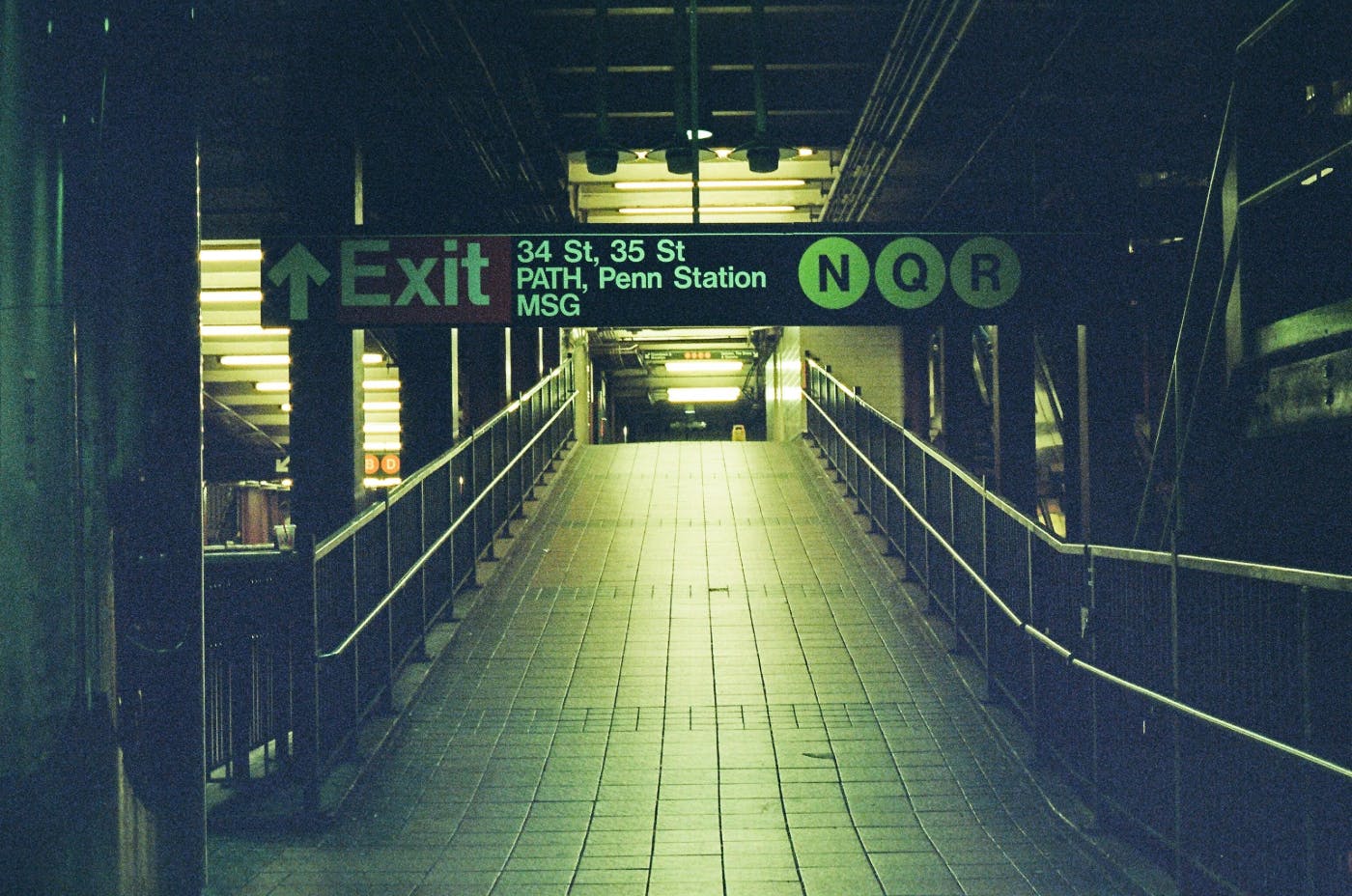
Because loyalty isn’t always constant anymore. Sometimes, it disappears for months or years. But if you’ve made the right impression, customers can return with zero friction and pick up exactly where they left off.
Are You Ready for Seasonal Loyalty?
Epilogue to “The Loyalty Problem: Why Brands Can’t Keep Friends”
I was sitting on the porch of a tiki bar in the Bahamas one summer—back when I didn’t make quite so many noises when I sat down. The water was crystal blue, the whiskey was warm, and I was deep in the kind of reverie that only appears when you’re very far from email and equally close to another drink.
That’s when a voice said, “Good lord, man, you’re still a hideous creature, aren’t you?”
My friend Mike sat down, ordered something potent, and we spent the rest of the day talking, drinking, and laughing at the sea.
I hadn’t seen Mike in over four years. No big reunion energy. No “Oh my God, is it really you?” theatrics. Just the usual insult-as-greeting, followed by several hours of seamless conversation and comfortable silence.
Mike and I don’t need to talk every week. We don’t even text. But the friendship is there. Solid. Instant. Reliable. We pick up where we left off, no maintenance required.
A lot of brands wish customers were like that.
And these days, they can be—if you build the relationship right.
Because loyalty isn’t always constant anymore. Sometimes, it disappears for months or years. But if you’ve made the right impression, customers can return with zero friction and pick up exactly where they left off.
The question isn’t: Can you make people stay forever?
The question is: Will they come back when it matters?

Loyalty Isn’t Linear
Brands love to imagine the perfect customer journey. First-time visitor becomes loyal buyer. Loyal buyer becomes advocate. Advocate becomes eternal flame of brand devotion. Cue the harp music.
But that’s not how it works anymore—if it ever did.
Modern loyalty is messy. People come and go. They disappear for months. They try something new. They forget your name. And then—suddenly—they’re back, dropping something in the cart like nothing ever happened.
And you know what? That’s not failure. That’s normal.
Customers are seasonal now. They’re loyal when you fit into their life. When the timing’s right. When the need arises. When your brand still feels good to them. They haven’t ghosted you—they’re just off doing other things. And if you made the right impression? They’ll be back.
Brands that cling to old loyalty models panic when people drift. They launch win-back emails. They escalate the discount ladder. They guilt-trip in subject lines.
But trying to force permanent loyalty is like trying to force someone to hang out every weekend. Eventually, it stops feeling like a relationship and starts feeling like a job.
Real loyalty doesn’t always show up on schedule. But when it’s real, it returns. You just have to make sure your brand still feels like home when it does.
Why Brands Struggle With This
Brands want to be loved forever. And that’s sweet. A little needy, but sweet.
The problem is most brand strategies are built on the fantasy of forever. Lifetime value. Retention curves. Repeat purchase rates. There’s this deep-seated belief that if you play your cards right—nail the onboarding, get the emails flowing, reward the points—you’ll have them for life.
But people aren’t algorithms. They’re not linear. They don’t stick to your sales funnel timeline. They change. They leave. They get distracted. They cheat on you with a cheaper option. And sometimes... they just get bored.
When brands expect constant loyalty, they start taking absence personally. Every unsubscribe feels like a betrayal. Every cart abandonment becomes a crisis. Every quiet period triggers a campaign called “We miss you!”—which sounds less like affection and more like a guilt trip.
That pressure to maintain unbroken engagement leads to desperate behaviors. Over-emailing. Over-discounting. Over-automating. It turns what should be a healthy brand relationship into a clingy, awkward one.
But here’s the truth: the customers who drift away aren’t necessarily gone. They’re just elsewhere. And they’re not staying gone forever—unless you make it weird when they come back.
Loyalty today isn’t about constant presence. It’s about being the kind of brand people want to return to. A brand that doesn’t guilt, chase, or sulk when someone disappears for a while.
Because if you’re building something real, you don’t need to grip it tightly.
You just need to be ready when they show up again.

The Power of Showing Up When It Matters
Think about the people in your life you trust the most. They’re probably not the ones who text you every day with updates about their breakfast. They’re the ones who show up—when it matters, when it’s real, when you need them.
Great brands do the same thing.
You don’t need to be in your customer’s face all the time. You just need to show up in the right moment with the right energy. That could mean surfacing during a seasonal need. Or responding quickly when something goes wrong. Or sending something thoughtful—not promotional—at just the right time.
The goal isn’t constant visibility. It’s meaningful presence.
Some brands are like that friend you don’t talk to for months—but when you reconnect, it’s effortless. There’s no awkwardness. No guilt. Just, “Hey. Good to see you again.” And it works because there’s emotional trust built into the foundation.
Showing up when it matters means understanding your place in the customer’s life—not inflating your role, not begging for attention, but being confidently available.
And when you do that well, you don’t need to push for permanence. People remember how you made them feel. And when the season is right, they’ll find their way back.
No discount code necessary.
Signs You’ve Built Seasonal Loyalty
You may not hear from them often. They may not engage with your every post. But there are clear signals that your brand still lives in someone’s mental and emotional rotation.
Here’s how you know the connection’s still there:
They return at key moments
Maybe it’s once a year. Maybe it’s every time they move into a new apartment or start a new job, or plan a camping trip. You’re the go-to when that specific need shows up again. That’s not randomness—that’s earned trust on a schedule you don’t control.
They recommend you even when they’re not buying
They haven’t purchased anything in six months, but you show up in their “Top 5 things I swear by” post. Or they tag you in a thread about good customer service. Or they gift your product to someone else. That’s loyalty—even if it doesn’t look like it on a spreadsheet.
They remember the experience
They talk about your brand the way people talk about a favorite restaurant they haven’t visited in a while. “Man, we need to go back there sometime.” That nostalgia? That’s stickiness. That’s emotional memory doing its job.
They drift in and out with no friction
They come back like they never left. They don’t need a “welcome back” banner. They just re-engage. They remember their password. They pick up where they left off. That’s not customer behavior. That’s comfort.
They know who you are—even if they’re not checking in
They don’t forget you. You’re part of their internal brand map. When the need arises, your name surfaces. Not because you’ve been emailing them nonstop—but because you made the kind of impression that lasts.
Seasonal loyalty doesn’t shout. It doesn’t cling. But it’s steady. And when it’s nurtured right, it lasts far longer than forced engagement ever will.

How to Design for Seasonality
If you know customers will come and go, then the goal isn’t to stop them from leaving. It’s to make coming back feel easy. Natural. Even joyful.
That starts with letting go of the idea that every customer needs to be forever. Instead, build systems that trust they’ll return when they’re ready—and make sure the door’s open when they do.
Here’s how:
Stop panicking when people disappear
Your best customers aren’t ignoring you. They’re just living their lives. Don’t assume silence means lost loyalty. Sometimes, it just means they don’t need you right now—and that’s fine.
Make re-entry effortless
Let them log in without jumping through hoops. Keep their preferences saved. Let their last experience carry forward. The best seasonal loyalty feels like slipping back into a conversation you never really left.
Focus on memory, not presence
You don’t need to be everywhere. You just need to be memorable. That moment you made them laugh, or helped them out, or surprised them with something thoughtful? That’s the seed. It’ll sprout when the time is right.
Don’t overreact
A dormant customer isn’t a broken one. You don’t need to fire off six automated “Come back!” emails. One simple nudge—kind, confident, no pressure—is more than enough.
Create rituals that invite return
A seasonal sale. A well-timed reminder. A birthday note. A quiet campaign that says, “We’re still here. You’re always welcome.” Think less “win-back” and more “open door.”
Speak like a brand that’s sure of itself
Seasonal loyalty thrives when the brand doesn’t seem worried about being forgotten. You’re not begging. You’re not yelling. You’re just present—and that calm confidence creates trust.
Because the truth is, people do come back. If you gave them a reason to remember you, they’ll return.
Not because you chased them. But because you let them go without guilt—and made sure you were worth coming back to.

Summing Up
We started this series asking a simple question: Why is brand loyalty so hard to earn these days?
Five core blogs and five companion pieces later, we’ve come to a not-so-simple answer:
Because customers are tired. Because attention is scarce. Because trust is fragile.
And because most brands are still clinging to an old model of loyalty that no longer fits.
We’ve talked about decision fatigue, loyalty theater, microbetrayals, emotional imprinting, and now, this—the rise of seasonal loyalty—a quieter, gentler form of brand love that doesn’t always look like constant engagement but still runs deep.
And here's the twist: seasonal loyalty isn’t a downgrade. It’s an evolution.
People aren’t sticking with brands out of habit anymore. They’re choosing them based on relevance, resonance, and emotional truth. They come and go. They change. They drift in and out of your orbit.
But if you’ve built something meaningful—something that feels good to return to—they’ll be back. No pressure. No pleading. Just presence.
And that is what modern brand loyalty looks like.
Of course, this kind of loyalty doesn’t happen by accident. It’s built through intentional, identity-driven branding. Through real messaging, thoughtful UX, and human strategy. It’s what we do at ThoughtLab—and why brands come to us when they’re ready to stop performing and start connecting.
We help brands let go of the gimmicks, find their voice, and create the kind of emotional gravity that keeps people coming back—not just because they have to, but because they want to.
So if you’re ready to build loyalty the right way—seasonal, emotional, unforgettable—ThoughtLab is your brand-forward shop.
Let’s make something people remember.

